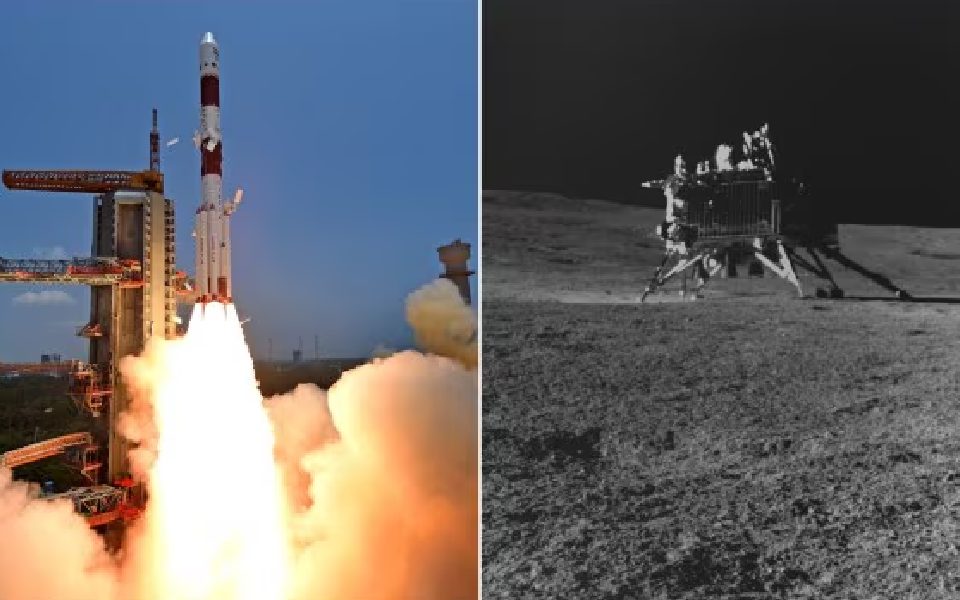Based on data from the ChaSTE payload on the Chandrayaan-3 lander, an yet-to-published research found an enormous temperature difference of approximately 60 degrees Celsius between the lunar surface and barely 10 centimeters within it. According to a senior scientist of the Indian Space and Research Organization (Isro), the extreme heat non-conductivity of the lunar surface may make it possible to build temperature-controlled dwellings beneath it.
Researchers are examining whether long-term habitation on Earth's satellite is feasible as well as whether the moon can function as a base for deep space travel.
The lander of the Chandra's Surface Thermophysical Experiment (ChaSTE) was equipped with a thermometer that was inserted 10 cm into the lunar regolith, which is composed of mineral pieces, rock chips, and lunar soil. Ten sensors, spaced one centimeter apart, were used by the device to measure the temperature in this layer at various points.
Ten sensors are mounted on it to record the temperature over a ten-day period at various depths. As the sun moved across the area, we could see how the temperature varied at different depths, the Isro scientist stated.
The Chandrayaan-3 mission was designed to allow all of the experiments to run for almost the whole time; one lunar day is equal to fourteen Earth days.
A live thermal conductivity test was conducted ten days later. "A heater was positioned at a depth of roughly 8 cm on the eighth sensor. After 10 days, we switched on the heater to observe how the regolith absorbed the heat. The sensors recorded the drop in temperature after the heater was turned on for four hours and then turned off. The scientist stated, "That gave us the first information about the actual thermal conductivity of the moon," and that the report would be published shortly.
The experiment demonstrated that the moon's surface was entirely non-conductive, according to the experts. "I can utilize it as a heat blanket for a human habitat if it is non-conducting. The scientist compared it to using a blanket on cold winter evenings. "Any heat generated inside will remain trapped, even though the outside temperature may be low," the scientist added. The stark temperature difference, which can range from 121 degrees Celsius during the day to -133 degrees Celsius at night, is one of the difficulties faced by lunar missions. Temperatures as low as -246 degrees Celsius have also been recorded in deep craters.
Let the Truth be known. If you read VB and like VB, please be a VB Supporter and Help us deliver the Truth to one and all.
Thiruvananthapuram (PTI): A Special Investigation Team (SIT) has been constituted to probe a second case of sexual assault against expelled Congress MLA Rahul Mamkootathil, police officials said on Friday.
The SIT will be led by G Poonguzhali, Assistant Inspector General at the Police Headquarters.
The team also includes a DSP rank officer and sub-inspectors, officials added.
The second sexual assault complaint was received by the Kerala Pradesh Congress Committee, which it forwarded to the state police chief.
ALSO READ: Cong expels rape-accused MLA Mamkootathil from party's primary membership
Following this, the Crime Branch registered a case and launched an investigation.
Crime Branch officials said the email complaint contained only the sender's email ID and no other contact details.
As part of the probe, they have sent a reply email requesting that the complainant contact them and provide her statement.
The complainant has alleged that she was sexually assaulted under the false promise of marriage, a Crime Branch official said.
However, details such as the location and date of the alleged incident are not currently available to the police.
The SIT will attempt to trace the sender of the email and record her statement, which is crucial for further investigation, the officer said.
Mamkootathil was expelled from the Congress party on Thursday after a court here rejected his anticipatory bail petition in another rape case.
Police said he is currently absconding, and a manhunt is underway in Kerala and neighbouring states.





